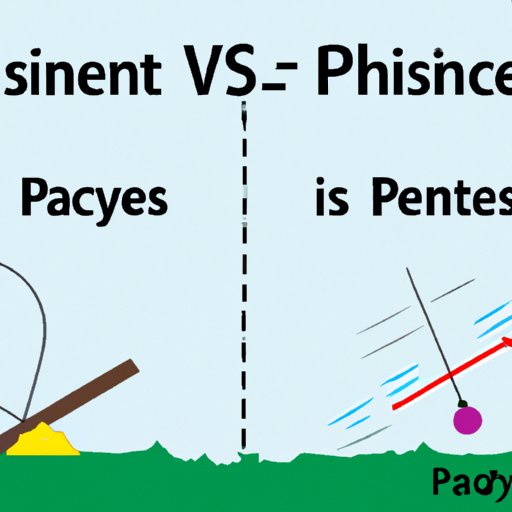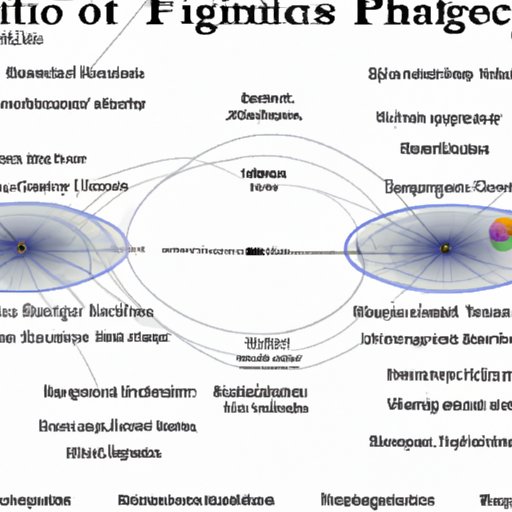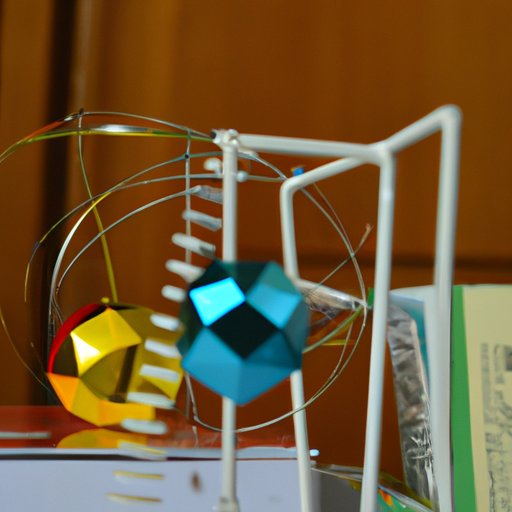Introduction
Physics and physical science are two disciplines that many people find confusing. As such, it is important to understand what each field encompasses and how they relate to one another. To begin, let’s explore the definition of each term.
Definition of Physics
The American Institute of Physics (AIP) defines physics as “the study of matter, energy, and the interaction between them.” This includes the study of motion, forces, and the behavior of objects in both the macroscopic and microscopic realms. Physics also seeks to explain the underlying principles that govern the natural world.
Definition of Physical Science
On the other hand, physical science is a broad field of study that encompasses several disciplines, including physics, chemistry, astronomy, and geology. According to the National Science Foundation (NSF), physical science is “a branch of science that studies non-living systems, in contrast to life science.” In other words, physical science focuses on the properties and interactions of matter, energy, and their effects on the environment.
Exploring the Differences Between Physics and Physical Science
Overview of Physics
Physics is a fundamental science that seeks to understand the basic laws of nature. Through experimentation and observation, physicists attempt to uncover the secrets of the universe. Topics studied in physics include motion, force, light, electricity, magnetism, thermodynamics, and quantum mechanics. Physicists also use mathematics to analyze data and make predictions about physical phenomena.
Overview of Physical Science
In contrast, physical science is an umbrella term for several different fields of study. While physics is a core component of physical science, it also includes chemistry, astronomy, and geology. All of these disciplines seek to understand the properties of matter, energy, and their effect on the environment. Additionally, physical science may incorporate aspects of biology, computer science, and engineering.
What is the Difference Between Physics and Physical Science?
The Scope of Physics
The scope of physics can be divided into two main categories: classical and modern physics. Classical physics deals with the behavior of macroscopic objects, while modern physics covers the behavior of microscopic particles. Examples of classical physics include Newtonian mechanics, thermodynamics, and electromagnetism. Examples of modern physics include relativity, quantum mechanics, and particle physics.
The Scope of Physical Science
Physical science, on the other hand, has a much broader scope. It encompasses all of the various branches of science, including physics, chemistry, astronomy, and geology. This means that physical science can cover a wide range of topics, from the structure of atoms to the formation of galaxies. Additionally, physical science may incorporate aspects of biology, computer science, and engineering.
How They Are Related
Despite their differences, physics and physical science are closely related. Physics is a core component of physical science, so it is essential to understanding the world around us. Additionally, the two disciplines often overlap in areas such as thermodynamics, optics, and acoustics. Furthermore, many of the discoveries made in physics have had profound implications for physical science.

A Comparison of Physics vs Physical Science
Different Fields of Study
One of the main differences between physics and physical science is their respective fields of study. Physics is primarily concerned with the behavior of matter and energy, while physical science encompasses a variety of disciplines. For example, physics deals with topics such as motion, force, and energy, while physical science covers topics such as chemistry, astronomy, and geology.
Different Areas of Expertise
The two disciplines also have different areas of expertise. Physics is typically focused on more theoretical concepts, while physical science is more practical. For instance, physicists may spend their time studying the behavior of subatomic particles, while physical scientists may focus on developing new technologies or analyzing data.

Examining the Similarities and Differences of Physics and Physical Science
Commonalities
Despite their differences, physics and physical science share some commonalities. Both disciplines involve the study of matter and energy, and they often overlap in areas such as thermodynamics, optics, and acoustics. Additionally, the two fields rely heavily on mathematics to analyze data and make predictions about physical phenomena.
Distinctions
However, there are some key distinctions between the two disciplines. Physics is mainly concerned with the behavior of matter and energy, while physical science is a broad field of study that encompasses several different disciplines. Additionally, physics is more theoretical in nature, while physical science is more practical.
How Are Physics and Physical Science Related?
Interdisciplinary Connections
Physics and physical science are closely related due to their interdisciplinary connections. Many of the discoveries made in physics have had profound implications for physical science, and vice versa. For instance, Albert Einstein’s Theory of Relativity revolutionized our understanding of both space and time, while advances in physics have enabled the development of new technologies such as lasers and nuclear power.
Synergy and Collaboration
Additionally, the two disciplines often work together in synergy and collaboration. Physicists and physical scientists often collaborate on projects to further their understanding of the natural world. For example, physicists and chemists may work together to develop new materials or investigate the behavior of subatomic particles. This type of collaboration is essential for advancing knowledge in both fields.

The Role of Physics and Physical Science in Everyday Life
Applications in Technology, Medicine, and Other Industries
Physics and physical science play a vital role in everyday life. The discoveries made in these fields have enabled the development of new technologies, medicines, and other industries. For example, advances in physics have enabled the development of lasers, nuclear power, and other cutting-edge technologies. Meanwhile, physical science has enabled the development of new medicines, materials, and renewable energy sources.
Impact on Society
The discoveries made in physics and physical science have had a profound impact on society. For instance, advances in physics have enabled us to better understand the universe and its mysteries. Similarly, physical science has allowed us to develop new technologies and medicines that have improved the quality of life for people around the world.
Unveiling the Mysteries of Physics and Physical Science
Scientific Exploration
At its core, physics and physical science are about scientific exploration. Physicists and physical scientists strive to uncover the secrets of the universe. Through experimentation and observation, they seek to answer questions such as “What is the nature of matter and energy?” and “How do they interact?” Their discoveries have enabled us to better understand the world around us.
Advancing Knowledge
The discoveries made in physics and physical science have advanced our knowledge of the natural world. For instance, physicists have uncovered the secrets of subatomic particles, while physical scientists have developed new technologies and medicines. These discoveries have had far-reaching implications for society, and they will continue to shape our understanding of the universe for years to come.
Conclusion
Physics and physical science are two closely related disciplines that are essential for understanding the natural world. Although they have some differences, they share many commonalities and often work together in synergy and collaboration. The discoveries made in these fields have enabled the development of new technologies, medicines, and other industries, and they have played a vital role in advancing our knowledge of the universe. Ultimately, physics and physical science are integral parts of our lives, and they will continue to shape our understanding of the world for years to come.
(Note: Is this article not meeting your expectations? Do you have knowledge or insights to share? Unlock new opportunities and expand your reach by joining our authors team. Click Registration to join us and share your expertise with our readers.)
